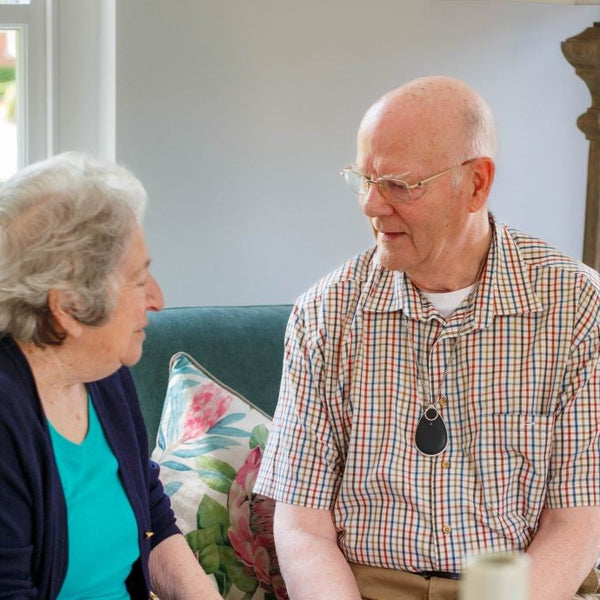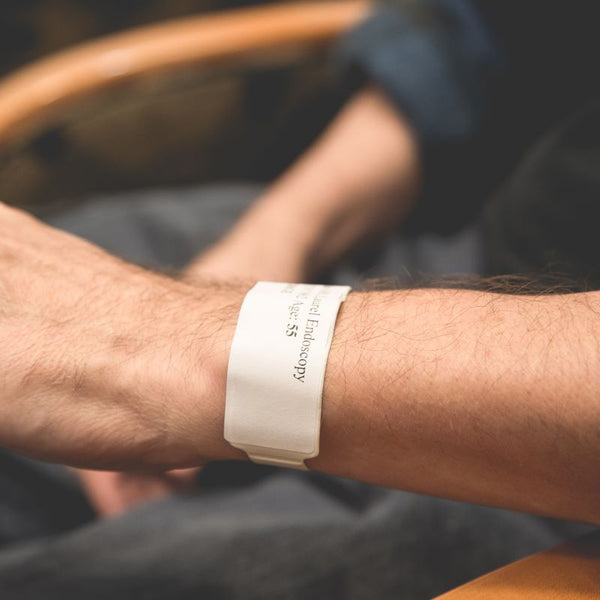As a keyholder for a personal alarm user, you may receive a phone call from the monitoring centre if the alarm is intentionally pressed and your loved one needs assistance. The personal alarm user will be put through to a call operator as soon as the alarm is triggered, who will contact you and the emergency services, if needed.
What will I need to do as a keyholder?
If the emergency services are not required, then you will need to attend the property as soon as possible to check on the personal alarm user. If you have a key to the house then make sure you have it with you, or if you will need to access a key safe to get the key then be sure to have the code with you.
The call operator will ask you to press the alert button on the personal alarm or fall alarm so they can speak with you when you are with the personal alarm user. They may advise you of any other action to take; for example, if your loved one has had a serious fall then you may be told not to move them.
If the alarm monitoring centre has already called the emergency services, then you will need to get to the property as soon as possible to unlock the door and let them in.

What to do if an elderly person falls down
Falling down can be a bit of a shock, for observers and the older person. Find out what to do if they’ve fallen.
What will I need to bring as a keyholder?
The key to the property is the most important thing to bring. As keyholder, your job is to be able to access the house if ever the alarm user needs you to.
Some keyholders also have the phone numbers for other emergency contacts, particularly if they are a neighbour, so that they can let family know if there’s a problem.
Key symptoms to be aware of
Personal alarms for the elderly are popular because of the increased risk of injury should they trip or fall. Personal alarms are particularly useful if the older person lives alone because it provides confidence that they can call for help if it is needed.
One of the most serious injuries is a hip fracture, which could be a concern if any of the following symptoms are displayed:
- Pain in the hip or upper leg
- Swelling and bruising around the hip and upper leg
- Not being able to stand or put weight on the affected hip and leg
- Difficulty moving the hip and leg
- The affected leg is at an odd angle or is shorter than the unaffected leg
A stroke is another condition that many elder people worry might happen when they’re home alone. To recognise the symptoms of a stroke, make sure you’re familiar with the rule of ‘F.A.S.T.’:
- F is for face. Has their face has fallen on one side? A good way to assess this is to ask if they can smile.
- A is for arms. Can they raise both arms and keep them in that position?
- S is for speech. Is their speech slurred or inaudible?
- T is for time. The quicker you get help, the better the person’s chances of recovery are.
Heart problems in the elderly can become more common with increasing age. A heart attack can be tricky to spot as it does not always manifest itself in severe chest pain. The symptoms you should look out for are:
- Chest pain: The chest may feel as though it is being squeezed or pressed by a heavy object. The pain might not stay localised to the chest, it can also radiate to the jaw, neck, arms and back. It is usually the left arm that is most affected, but pain can be experienced in both arms.
- Shortness of breath: If a person appears to be struggling to catch their breath it may be an indication that a heart attack is taking place.
- Feeling weak or light headed: An overall feeling of weakness can be a signal that the heart is under duress.
- Coughing and wheezing: As well as struggling to breathe, someone suffering a heart attack may wheeze, cough and splutter.
- Feeling sick: A feeling of nausea or actual vomiting is not uncommon in the event of a heart attack.
*All medical advice informed by the NHS website (accessed September 2024). Please check with a medical professional for the most current advice.
How can I help in an emergency as a keyholder?
Once a medical emergency has been ruled out, you can help the alarm user by trying to relieve the problem that caused them to trigger an alert in the first place.
In many situations, this might just mean comforting the alarm user with a drink and a chat to make sure they’re feeling better, or calling a relative to come and check on them. Thoughtful tasks such as booking a doctor’s appointment for them, picking up painkillers or promising to check in on them the next day could provide a big help and put their mind at rest.
Meet Hannah, one of our alarm call operators

Like all our Emergency Resolution Team, Hanna has received specialist training so she can support our customers no matter what the emergency. Hanna previously worked in the medical industry and this experience helps her when liaising with the ambulance services to resolve emergencies.
When to call 111
If your loved one is not in a life-threatening condition, but still needs urgent care, then the NHS non-emergency number 111 may be able to provide advice. They will be able to provide you with support in taking the right steps, whether that’s visiting a walk-in centre, making an appointment with a GP, or self-managing the problem at home.
If you are unsure of the best action to take, or will be unable to see a GP for some time and are concerned, then it may be best to request guidance from 111.
If you’re called to an incident by a personal alarm user, the key is to try not to panic. Just remember; the faster and more calmly you act, the more chance you will have of helping their recovery. You will be able to speak directly with the call operator through the personal alarm alert equipment and they will reassure and advise you.
Our alarm monitoring call operators are highly trained and our Emergency Resolution Team is one of the major reasons why our range of personal alarms offer true peace of mind to many older and vulnerable people and their loved ones.
What happens if I am unable to answer the phone?
If you are unable to answer our call then don't worry. We will try any alternative phone numbers we have for you, such as a landline. We will then try to call the next emergency contact listed with us or the emergency services.
How do I know if I am listed as keyholder?
When someone joins our personal alarm service, we ask them to provide the details of their emergency contacts, keyholders and Next of Kin. We will then contact you so you can confirm the details are correct and provide any additional information, such as alternative phone numbers.
Not all emergency contacts are able to respond in person in an emergency. If you are not a keyholder and would like to be listed as a contact who should be informed only in event of an emergency, please let us know. This helps us prioritise who we call.
What should you do as keyholder if your details change or you are going away?
It is important that you let us know if your contact details change or if you are no longer able to be a keyholder. This will help us provide the best possible response in an emergency by contacting someone who can quickly attend.
You can let our Customer Services team know of any changes by contacting us or calling 0800 085 7371 Monday - Friday, 9am - 5pm.
If you are going away, for example on holiday, then you can also let us know so that we do not try to call you whilst you are unavailable.
Do personal alarm users need to have keyholders and emergency contacts?
We recommend that personal alarm users have at least one keyholder listed with us so we can get help as quickly as possible. Not everyone has someone who lives nearby and can respond however and you can still use our service without a keyholder.




